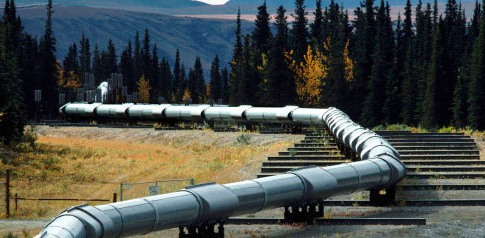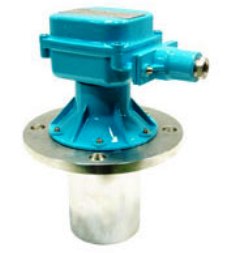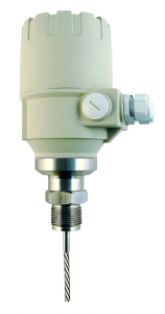Level control in industrial automation systems
 Many automation systems require level measurement. And there are many industries where level measurement is needed. Today there are many level sensors that allow you to measure many physical quantities related to the amount in the tank of a certain material.
Many automation systems require level measurement. And there are many industries where level measurement is needed. Today there are many level sensors that allow you to measure many physical quantities related to the amount in the tank of a certain material.
The first level one sensors only worked with liquids, but now, thanks to advances, there are sensors for bulk materials. Level meters and level switches allow you to continuously monitor the level and control whether the material reaches the specified level. In this article we will focus on the types of modern level meters.

Today, level sensors can work with both liquids and bulk materials and even gases, and the material can be located both in the container and in the pipeline. Sensors are divided into contact and non-contact, and according to the method of installation, they can be designed for installation either in the body of a pipeline or container with the measured material, or above the measured material.
The first-level sensors worked on the simple principle of a float and used a method of closing contacts with material. Now the sensors have undergone improvements, they contain circuits in their design that provide a number of additional functions, such as measuring volume, flow rate, signaling when the limit is reached, etc. The measurement results can be processed and stored.
Whether the industry handles liquid, viscous, gaseous, free-flowing, sticky, pasty materials, there is always the right level sensor for the right environment. Water, solution, alkali, acid, oil, oil, fuels and lubricants, plastic granules — the scope of application is very wide, and sensors based on different physical principles allow you to choose the one suitable for specific conditions and for almost any task.

The sensor hardware consists of two parts: the sensor itself and the data visualization tool. Contact and non-contact sensors, constant change and border tracking — the range of sensor capabilities today is quite rich.
The type of sensor you choose is determined by the specifics of the industrial process and the environment in which the sensor will operate. With visualization tools, the measurement process can generate graphs to analyze product-level information, greatly facilitating automation.
Level meters are used for continuous monitoring of the level of bulk materials or liquids in natural and artificial reservoirs. They measure the level with a resolution of a few milliseconds to tens of seconds.
They are used to monitor the level of aqueous solutions, acids, bases, alcohols, etc., as well as bulk materials.They are contact and non-contact, and according to physical principles they are completely diverse. Let's look at each type in more detail.
Microwave radar level gauges

They are used for continuous monitoring of the level, they are universal. The work uses the phenomenon of reflection of an electromagnetic wave from the interface between two media. The frequency of the waves is from 6 to 95 GHz, and the higher it is, the lower it is the dielectric constant measured material, for example for petroleum products, the frequency of the waves should be maximum. But the dielectric constant should not be higher than 1.6.
Since the sensor works like a radar, it is not afraid of interference, and the high frequency of the waves minimizes the parasitic influence of pressure and temperature in the vessel. Radar sensors with such high operating frequencies are immune to dust, vapor and foam.
Depending on the type and size of the sensor antenna, the accuracy of the device may vary. The bigger and wider the antenna, the stronger and more accurate the signal will be, the higher the range, the better the resolution. The accuracy of microwave radar sensors is within 1 mm, they can work at temperatures up to +250 ºС and measure the level up to 50 m.
Radar level meters are used in many industries where bulk materials are handled: in construction, woodworking, in the chemical industry, in the food industry, in the production of plastics, glass and ceramics. They are also applicable for measuring the level of liquids.
Acoustic measuring devices

Acoustic waves are used, which, when reflected by the observed substance, are received and processed.The software filters the desired signal by detecting spurious echoes.
The signal is transmitted with a powerful pulse, so losses and attenuation are minimal. Depending on the temperature, the signal is compensated and the accuracy remains high, within a quarter of a percent. The sensor is mounted vertically or at an angle. The level of change can be up to 60 meters. Operating temperature up to +150 ºС. Explosion-proof.
Acoustic manometers are used in many industries, from crane loading automation systems and sewage level monitoring systems in septic tanks, to chocolate manufacturing.
Ultrasonic level meters

Ultrasonic vibrations reflected from the interface between the two media are received and the time interval between the moment the signal is sent and received is measured. The discreteness is a few seconds, this is due to the finite speed of sound in air. The maximum measurement level reaches 25 meters.
The software allows you to pre-configure the sensor to turn off during the period when some mechanism passes under it, for example a stirring blade. It is possible to control the sensor from a computer. Installed vertically above the material or at an angle. Accuracy within a quarter of a percent. Operating temperature up to +90 ºС. Explosion-proof.
Ultrasonic level meters are used to monitor the level of bulk materials in many areas, from cement plants to the chemical and food industries.
Hydrostatic level gauges

Measure the liquid pressure at the bottom of the container. The deformation of the sensitive element is converted into an electrical signal. When measuring differential pressure, a connection to the atmosphere is necessary.Suitable for working with water and other non-aggressive liquids, for pastes, etc. It can work both in open and closed rooms, in pools, wells, etc.
The amount of pressure depends on the density of the liquid and its volume in the tank, on the height of the liquid column. The level gauge can be submersible or regular - either a capillary tube is removed for contact with the atmosphere, or the transmitter is cut directly into the bottom of the tank.
During installation, it is necessary to exclude false fixation of the pressure of the liquid flow when it is pumped into the tank. Accuracy within a quarter of a percent. Operating temperature up to +125 ºС.
Hydrostatic level meters are widely used in the chemical industry in tanks, in housing and communal services in wells, in the food industry they are equipped with containers with liquid products, in metallurgy, in the pharmaceutical industry, in the petroleum industry, etc.
Capacitive level meters

The sensor probe and the conductive tank wall form a capacitor plates… Instead of a conductive wall, a special pipe can be used to mount on the probe probe or a second separate grounded probe. The substance between the plates serves as the capacitor's dielectric—air or material whose level is monitored.
Obviously, when the tank is filled, the electrical capacity of the capacitor will gradually change. With an empty tank, the electrical capacity will have a certain value, and in the process of air displacement, it will change. Increasing the product in the tank changes the capacitance of the capacitor formed by the sensor and the tank.
The sensor electronics convert the change in capacitance into a change in level.If the shape of the tank is unusual, then a second probe is used, since the plates of the formed capacitor must be located vertically. The maximum level reaches 30 meters. The accuracy is not less than one-third of a percent. Operating temperature up to +800 ºС, depending on the model. The delay time is adjustable.
Capacitive level sensors are mainly used to monitor the level of liquids in many areas where it is necessary to maintain a certain level of the product: in the production of beverages, household chemicals, in water production plants, in agriculture, etc. .
Magnetic level gauges

There is a permanent magnet float on the driver. Magnetically sensitive switches are installed inside the driver. The sequential operation of the switches when filling or emptying the tank causes the current to change in individual parts.
The principle is so simple that these level meters do not require adjustment and are therefore cheap and popular. Constraints are introduced only by the density of the liquid. Operating temperature up to +120 ºС. The shift limit is 6 meters.
The magnetic manometer is a cost-effective solution for liquid level measurement in many industries.
Microwave reflex meters

Unlike radar measuring devices, here the wave propagates not in the open air, but along the probe of the device, which can be a rope or a stick. The wave pulse undergoes reflection from the interface between two media with different dielectric constants and returns back, and the time between the moment of transmission and the moment of reception is fixed by the electronics and converted into a level value.
The use of a waveguide avoids the parasitic effect of dust, foam, boiling, as well as the influence of the ambient temperature. The dielectric constant of the measured medium must not be lower than 1.3e.
Reflector level gauges can be used where radar cannot work due to the radiation pattern, for example in narrow tall tanks. Measurement limit 30 meters. Operating temperature up to +200 ºС. Accuracy within 5 mm.
Reflex microwave level transmitters can be used to continuously monitor the level of non-conductive and conductive liquids and solids, as well as to measure their mass and volume. Applicable in many industries.
Bypass level transmitters

A measuring column is located on the side of the vessel. The liquid fills the tube and its level is measured. The principle of vessel communication. A magnet floats on the surface of the liquid in the tube, and near the tube floats a magnetostrictive sensor that converts the distance to the magnet into a current signal.
The tube has indicator plates of different colors that change their position under the influence of the magnet's magnetic field. Due to the fact that there is no contact of the liquid with the external environment, bypass transmitters are applicable in the food and pharmaceutical industries. Measurement level limitation to 3.5 meters. Accuracy within 0.5 mm. Operating temperature up to +250 ºС.
Bypass measuring devices are applicable when visual control of the liquid level is required: in the thermal power industry, in the chemical industry, in the residential sector, in the electricity industry, in the food industry and in the oil and gas industry.
Magnetostrictive level transmitters

The flexible or rigid guide contains a float with a built-in magnet. A waveguide is located along the conductor, around which a radial magnetic field is excited by current pulses through the coil. When this magnetic field collides with the magnetic field of the float's permanent magnet, the magnetostrictive waveguide undergoes highly dynamic plastic deformation.
As a result of this deformation, the ultrasonic wave propagates along the waveguide and is fixed by an electronic transducer at one end. The comparison during the instant of the trigger pulse and the time of occurrence of the deformation pulse determines the location of the float. The measurement level limit reaches 15 meters. Accuracy within 1 mm. Operating temperature up to +200 ºС.
Magnetostrictive manometers are used in the chemical industry to monitor the level of foaming liquids, in the food industry and in metallurgy to monitor the level of liquid foodstuffs and fuels.
Lots of level gauges

A load is attached to a cable or tape wound on a drum. When installing the sensor on the tank cover, it becomes possible to reduce the load in the tank. The electric motor rotates the drum and the load descends down the cable. When the weight touches the surface of the material to be measured, the tension in the rope is released and this signals the level of the material. The rope winds around the drum again, lifting the load back up.
The electronics calculates the level based on the number of revolutions of the drum. For the detection of substances with a density of 20 kg per m3, such a sensor is suitable. Measurement level limitation to 40 meters.Accuracy from 1 to 10 cm, depending on the modification. The measurement interval is set by the user and can be from 6 minutes to 100 hours. Operating temperature up to +250 ºС.
Multi-batch meters are used in various industries to control the level of bulk materials in automated systems.
